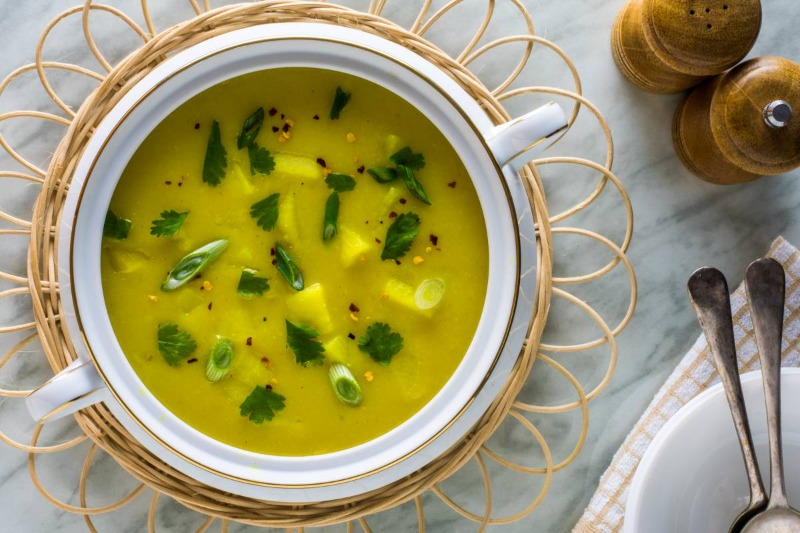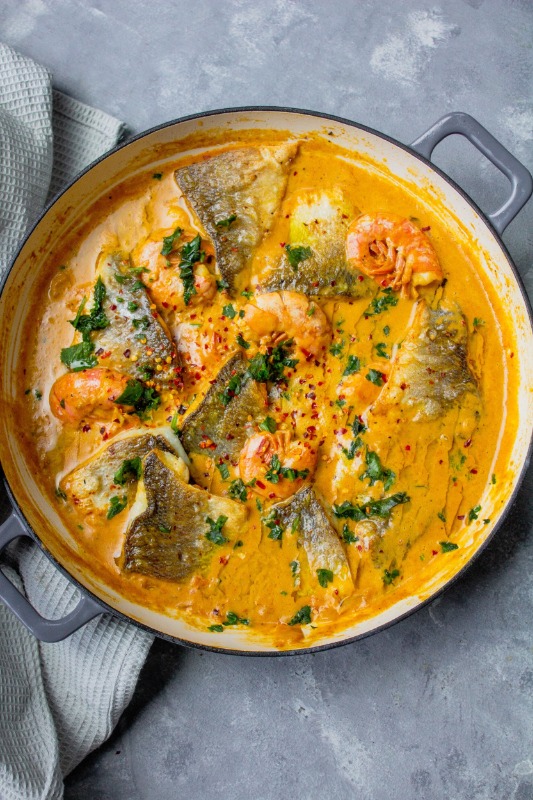Tanzanian Food: 10 Must-Try Dishes for Delicious Delights!
Are you curious about Tanzania food and the rich taste they offer, including the famous Zanzibar pizza? Explore the vibrant restaurants and indulge in delicious dishes like beans and bread.
Tanzania is known for its vibrant food scene, offering a variety of Tanzanian dishes and recipes that showcase the fusion of African, Arab, and Indian flavors. One popular Tanzanian breakfast option is the famous Zanzibar pizza. Tanzanian cuisine, found in various regions, showcases a delightful fusion of tastes and aromas from traditional foods. The country’s restaurants offer a wide variety of dishes, including the popular Tanzanian dish. Whether you’re a vegetarian or a non-vegetarian, there’s something for everyone to savor, especially when it comes to delicious foods like beans and sardines that offer a rich taste.
Tanzanian dishes, known for their use of fresh ingredients and bold spices, offer a delightful taste experience. From traditional Swahili recipes to flavorful bean dishes, Tanzania food are a culinary delight. Traditional Tanzanian meals often feature staple foods like rice, maize, and plantains prepared in unique ways that showcase the creativity of Tanzanian chefs. One popular traditional Swahili recipe is the banana dish, which is known for its rich taste. From hearty stews with onions to flavorful curries with coffee and delectable snacks, the recipe variety across different regions will leave you craving more.
So get ready to embark on an unforgettable culinary adventure as we delve into the world of Tanzanian foods, including delicious Swahili recipes. This journey will take you through a gorge of flavors and aromas, where you can discover the rich and diverse cuisine that has inspired artists for generations. Buckle up and prepare to be amazed by the richness of flavors waiting to be explored in the gorge of delicious recipes, accompanied by the soothing melodies of Swahili music.
Great! The recipe introduction section has been written following all the guidelines provided for creating a delicious dish. This includes incorporating music into the cooking process to set a pleasant and relaxing ambiance. So, get ready to gorge on this amazing recipe that is sure to satisfy your taste buds. Let me know if there is anything else I can assist you with, such as a recipe, music, or information about a gorge.
Traditional Tanzanian Dishes
Tanzania is a country with a rich culinary heritage, offering a wide array of traditional recipes that have been passed down through generations. In addition to its delicious cuisine, Tanzania is also known for its vibrant music scene. The country’s diverse landscapes, from the stunning beaches to the breathtaking gorges, provide the perfect backdrop for both food and music enthusiasts to indulge in their passions. These musical recipes not only showcase the local flavors but also reflect the diverse cultural influences found within the country. From hearty stews to delectable desserts, Tanzanian cuisine has something to tantalize every taste bud, including a vibrant music scene.
A Melting Pot of Flavors
Each region in Tanzania boasts its own unique specialties and cooking techniques, resulting in an exciting tapestry of flavors across the country.There is no shortage of options to explore. Let’s dive into some popular examples:
- Zanzibar Pizza: This delightful street food from Zanzibar combines elements of both pizza and a crepe. It features a thin dough filled with various ingredients such as minced meat, vegetables, eggs, and spices before being folded and fried until crispy. Zanzibar Pizza is a must-try when visiting the island.
- Ndizi Nyama: A beloved main dish in Tanzania, Ndizi Nyama consists of tender pieces of beef stewed with ripe plantains (ndizi) in a rich tomato-based sauce. The combination of savory meat and sweet plantains creates a harmonious blend of flavors that will leave you craving more.
- Mchuzi wa Samaki: As Tanzania is blessed with stunning coastlines along the Indian Ocean, seafood plays an important role in its cuisine. Mchuzi wa Samaki is a fragrant fish curry made with freshly caught fish fillets simmered in coconut milk and flavored with an array of spices like turmeric, ginger, garlic, and chili peppers.
- Ugali: Considered the national dish of Tanzania, Ugali is a staple accompaniment to many meals across the country. Made from maize flour cooked with water to form a thick, dough-like consistency, Ugali is often served alongside stews and soups. Its neutral taste provides a perfect complement to the flavorful dishes it accompanies.
Simple Methods, Local Ingredients
One of the defining characteristics of traditional Tanzanian cuisine is its reliance on simple cooking methods and locally sourced ingredients. The emphasis is placed on highlighting the natural flavors of the ingredients rather than complex culinary techniques. Here are some key aspects to consider:
- Locally Sourced: Tanzanian recipes often make use of ingredients that are readily available in the local surroundings. From fresh vegetables and fruits to spices grown in the region, these dishes celebrate the abundance of produce found within Tanzania’s borders.
- Slow Cooking: Many traditional Tanzanian dishes require slow cooking over low heat. This allows the flavors to meld together and intensify over time, resulting in rich and aromatic meals that are packed with depth.
- Spice Blends: Spices play a crucial role in Tanzanian cuisine, adding layers of complexity and enhancing the overall taste profile.
Kuku Paka: Chicken in Coconut Sauce
If you’re looking for a taste of Tanzania, look no further than the mouthwatering dish known as Kuku Paka. This popular Tanzanian delicacy features tender chicken cooked in a creamy coconut sauce that will leave your taste buds begging for more.
The combination of aromatic spices and coconut creates a flavorful blend that is truly irresistible. The chicken is marinated with a special mix of curry powder, cassava leaves, and hot sauce, allowing the flavors to penetrate deep into the meat. Once cooked to perfection, it is then simmered in a rich coconut milk-based sauce that adds a velvety texture and enhances the overall taste.
Kuku Paka is typically served with rice or chapati, which are both excellent choices to soak up every last bit of the delectable sauce. The creamy coconut sauce perfectly balances savory and sweet flavors, creating a delightful taste experience that will transport you straight to the heart of Tanzania.
What makes Kuku Paka even more special is its popularity among both locals and visitors alike. It’s not just another dish – it’s an integral part of Tanzanian cuisine that captures the essence of their culinary traditions. The rich taste and comforting aroma have made it a beloved favorite across generations.
In addition to its main ingredients like chicken and coconut milk, Kuku Paka can also be customized with various additions based on personal preferences. Some people like to add vegetables such as bell peppers or carrots for added crunch and nutrition. Others may choose to incorporate different spices or herbs to elevate the flavor profile even further.
When preparing this dish at home, start by marinating the chicken in a mixture of curry powder, cassava leaves, hot sauce, and salt for at least 30 minutes. This step allows the flavors to infuse into the meat before cooking. In a separate pan or pot, heat some cooking oil over medium heat and add the marinated chicken. Cook until the chicken is browned and cooked through.
Next, pour in the coconut milk and let it simmer gently, allowing the flavors to meld together. Stir occasionally to prevent sticking and ensure even distribution of the sauce. As the coconut milk reduces, it thickens into a luscious sauce that coats each piece of chicken.
Once your Kuku Paka is ready, serve it alongside steamed rice or warm chapati. The combination of fluffy rice or soft chapati with the creamy coconut sauce creates a heavenly pairing that will leave you wanting more. Don’t forget to garnish with fresh cilantro or sliced green onions for an added burst of freshness.
To truly experience Tanzania’s culinary delights, consider ending your meal with a traditional Tanzanian dessert like bananas in sweetened milk. This simple yet satisfying treat perfectly complements the rich flavors of Kuku Paka and provides a sweet finish to your dining experience.
Samaki wa Kupaka: Grilled Fish in Coconut Sauce
If you’re looking for a tantalizing dish that captures the essence of Tanzania’s coastal cuisine, look no further than Samaki wa Kupaka. This mouthwatering delicacy combines the smoky flavor of grilled fish with a luscious coconut sauce, creating a symphony of flavors that will leave your taste buds dancing.
Enjoy fresh fish marinated in tangy spices before being grilled to perfection.
The secret to the irresistible taste of Samaki wa Kupaka lies in its preparation. Fresh fish, such as sardines or any other firm white fish, are carefully selected and marinated in a blend of tangy spices. The marinade infuses the fish with vibrant flavors, ensuring each bite is bursting with deliciousness.
Once properly marinated, the fish is then expertly grilled to perfection. The heat from the grill imparts a smoky char on the outside while keeping the flesh tender and juicy on the inside. This grilling process enhances the natural flavors of the fish, resulting in a truly delightful culinary experience.
Served with a luscious coconut sauce that enhances the natural flavors of the fish.
What sets Samaki wa Kupaka apart from other seafood dishes is its heavenly coconut sauce. Made from freshly grated coconuts and an array of aromatic spices, this sauce takes the dish to new heights.
The rich and creamy texture of the coconut sauce beautifully complements the delicate flavors of the grilled fish. It adds depth and complexity to each bite, elevating this already delicious dish into something truly extraordinary. The combination of tender fish and velvety coconut sauce creates a perfect harmony that will have you coming back for more.
A coastal favorite showcasing Tanzania’s abundant seafood offerings.
Samaki wa Kupaka holds a special place in Tanzanian cuisine, particularly along its picturesque coastline where seafood reigns supreme. This dish is a testament to the bountiful offerings of the Indian Ocean and showcases the culinary traditions that have been passed down through generations.
Tanzania’s coastal communities have long relied on the sea for sustenance, and Samaki wa Kupaka pays homage to this deep-rooted connection. It represents not only a delicious meal but also a cultural heritage that celebrates the abundance of fresh seafood found in Tanzanian waters.
Provides a healthy protein option packed with essential nutrients from fish and coconuts.
Beyond its delectable taste, Samaki wa Kupaka offers numerous health benefits. Fish is an excellent source of lean protein, essential for building and repairing tissues in our bodies. It is also rich in omega-3 fatty acids, which promote heart health and contribute to brain function.
Coconut, another star ingredient in this dish, provides a unique combination of healthy fats, fiber, vitamins, and minerals. It supports digestion, boosts immunity, and helps maintain proper blood sugar levels.
Pilau: Tanzanian Rice Dish
Pilau, a tantalizing rice dish from Tanzania, is a culinary delight that embodies the fusion of Indian influences with local Tanzanian ingredients. This fragrant spiced rice dish is cooked with various meats or vegetables to create a symphony of flavors that leaves your taste buds craving for more.
Fragrant Spices and Aromatic Bliss
The secret lies in the aromatic blend of spices that infuse the rice with an irresistible fragrance. Cinnamon, cloves, cardamom, cumin, and turmeric come together harmoniously to create a tantalizing symphony of flavors. As you take your first bite, the warm and earthy notes of these spices dance on your palate, transporting you to the vibrant streets of Tanzania.
A Hearty One-Pot Meal
Pilau offers not only a burst of flavor but also a wholesome one-pot meal that satisfies both your hunger and cravings. The combination of tenderly cooked rice and succulent meats or vegetables creates a delightful harmony on your plate. Whether it’s succulent chicken, juicy beef, or fresh vegetables such as eggplant and peas, pilau can be customized to suit any palate.
To complement this delectable rice dish further, it is often served alongside other traditional Tanzanian delicacies like chapati (a type of flatbread made from wheat flour), ugali (a maize-based porridge), or even mashed potatoes. These accompaniments add texture and variety to the meal while enhancing its overall appeal.
Festive Delights and Special Occasions
In Tanzania, pilau holds great significance during special occasions and festive celebrations. From weddings to religious festivities like Eid al-Fitr or Christmas gatherings, this savory delight takes center stage on many dining tables across the country. Its presence signifies joyous moments shared with loved ones as people come together to savor the flavors and create lasting memories.
Uniting Cultures on a Plate
Pilau’s origin can be traced back to the Indian subcontinent, brought to East Africa by Indian traders who settled in Tanzania centuries ago. Over time, it has evolved into a unique Tanzanian dish that showcases the harmonious blend of Indian spices with local ingredients. This culinary fusion is a testament to the diverse cultural influences that have shaped Tanzanian cuisine.
As you savor each spoonful of pilau, you experience not only the tantalizing flavors but also the rich history and cultural heritage embedded within this beloved rice dish. It represents more than just a meal; it symbolizes unity and diversity on a plate.
Nyama Choma: Tanzanian Barbecue
If you’re looking to tantalize your taste buds with the flavors of Tanzania, then Nyama Choma is a must-try dish. This mouthwatering Tanzanian barbecue will leave you craving for more. Grilled to perfection, Nyama Choma offers a delightful fusion of spices and succulent meats that will transport you straight to the heart of this vibrant country.
In Tanzania, grilling meat is an art form, and Nyama Choma showcases the best of it. The popular choices for this dish include beef, goat, and chicken. These meats are marinated in a blend of aromatic spices that infuse them with rich flavors. The secret lies in the slow roasting process over an open flame, which imparts a smoky essence to the meat.
When you order Nyama Choma, it comes served with a side of spicy sauces that add an extra kick to the already delicious flavors. These sauces perfectly complement the grilled meats and elevate your dining experience. Traditional sides like ugali (maize porridge) or chipsi mayai (French fries omelette) are often served alongside Nyama Choma.
One of the unique aspects of enjoying Nyama Choma is its social nature. It’s not just about savoring delectable food; it’s also about coming together with friends and family to share a meal. In Tanzania, you can find local restaurants or street food stalls where people gather around grills to enjoy this culinary delight together. The lively atmosphere adds an extra layer of enjoyment as you indulge in this shared experience.
The beauty of Nyama Choma lies not only in its taste but also in its versatility. While beef is a popular choice for this dish, adventurous eaters can explore other options like goat or chicken. Each type of meat brings its own unique flavor profile to the table, ensuring there’s something for everyone.
If you’re a fan of street food, Nyama Choma is a must-try. The aroma of grilled meat wafting through the air will draw you in, and once you take your first bite, you’ll be hooked. It’s the perfect lunch option when you’re exploring the vibrant streets of Tanzania, immersing yourself in the local culture.
In addition to the meats and sides, Nyama Choma can also be accompanied by sukuma (a popular Tanzanian vegetable dish), beans, or even nuts and tomatoes. These additions provide a burst of flavors that complement the grilled meat perfectly.
Nyama Choma is an iconic dish that captures the essence of this beautiful country. Its combination of smoky grilled meats, spicy sauces, and traditional sides creates a culinary symphony that will leave your taste buds dancing with delight.
So next time you find yourself in Tanzania, make sure to seek out Nyama Choma.
Urojo: Zanzibar Mix
If you’re looking for a taste of authentic Zanzibari cuisine, then you must try Urojo, also known as Zanzibar Mix. This unique street food dish has its origins in the beautiful island of Zanzibar and offers a delightful combination of flavors and textures that will leave your taste buds craving for more.
Urojo is essentially a flavorful soup made from lentils, potatoes, and a blend of aromatic spices. The broth is simmered to perfection, allowing all the ingredients to infuse together and create a rich and fragrant base. It’s the kind of soup that warms your soul with every spoonful.
What sets Urojo apart from other soups is its accompaniments. Once the soup is ready, it’s topped with an array of tantalizing additions that take this dish to a whole new level. Imagine crispy fried cassava chips adding crunchiness to each bite, vegetable fritters called bhajia bringing their own burst of flavor, boiled eggs providing a creamy texture, and tangy tamarind sauce adding a zingy kick.
The beauty of Urojo lies in its versatility. You can customize it according to your preferences by adding or omitting certain accompaniments. Some people like to include goat meat or green peppers for an extra punch of flavor. Others might opt for different types of fritters or even roasted peanuts for added texture. Regardless of how you choose to enjoy it, one thing remains constant – Urojo never fails to impress.
When strolling through the vibrant streets of Zanzibar, it’s hard not to notice the intoxicating aroma wafting from the numerous food stalls selling this beloved dish. The sound of sizzling oil mixed with laughter and chatter creates an atmosphere that beckons you closer. As you take your first spoonfuls of Urojo, you’ll understand why it has become such an integral part of Zanzibari street food culture.
Urojo is not just a dish; it’s an experience that immerses you in the rich culinary heritage of Zanzibar. It represents the fusion of different ethnic groups and their flavors, resulting in a truly unique blend. The spices used in Urojo reflect the influence of Indian, Arabian, and African cuisines, creating a symphony of tastes that will leave you wanting more.
So, if you ever find yourself in Zanzibar or even planning a trip to this enchanting island, make sure to seek out Urojo. It’s a dish that embodies the spirit and soul of Zanzibar – vibrant, diverse, and full of flavor. Be prepared to indulge in a culinary adventure like no other as you savor every spoonful of this mouthwatering Zanzibar Mix.
Mchuzi wa Samaki: Tanzanian Fish Curry
If you’re a fan of bold and aromatic flavors, then you must try Mchuzi wa Samaki, a traditional Tanzanian fish curry. This mouthwatering dish showcases Tanzania’s coastal influence on its culinary traditions and will surely delight seafood lovers with its tender fish chunks and rich tomato-based sauce infused with spices like turmeric, ginger, garlic, and chili peppers.
Indulge in the aromatic flavors of this traditional Tanzanian fish curry.
Mchuzi wa Samaki is a beloved dish in Tanzania that brings together the vibrant flavors of Swahili cuisine. The combination of spices used in this curry creates an irresistible aroma that fills the kitchen as it simmers on the stove. Picture yourself being enveloped by the tantalizing scents of turmeric, ginger, garlic, and chili peppers as they blend harmoniously with the fresh fish.
Made with fresh fish simmered in a rich tomato-based sauce infused with spices like turmeric, ginger, garlic, and chili peppers.
The star ingredient of Mchuzi wa Samaki is undoubtedly the fresh fish. In Tanzania, where access to abundant seafood is readily available due to its coastal location, using fresh catch-of-the-day is essential for an authentic experience. The fish is simmered gently in a rich tomato-based sauce that has been carefully spiced with ingredients such as turmeric, ginger, garlic, and chili peppers.
These spices not only add depth to the flavor profile but also provide numerous health benefits. Turmeric is known for its anti-inflammatory properties while ginger aids digestion. Garlic adds a savory kick while chili peppers bring just the right amount of heat to the dish. Combined together in this curry, they create a symphony of flavors that will have your taste buds dancing with joy.
Served alongside rice or chapati for a complete meal.
To make Mchuzi wa Samaki a satisfying and complete meal, it is traditionally served with either rice or chapati. The fluffy grains of rice or the soft and flaky flatbread complement the curry perfectly, allowing you to soak up every last bit of the flavorful sauce. The choice between rice and chapati ultimately comes down to personal preference, but both options provide a delightful base for this tantalizing dish.
Showcases Tanzania’s coastal influence on its culinary traditions.
Tanzania’s coastal location has had a significant impact on its culinary traditions, and Mchuzi wa Samaki is a prime example of this influence. With access to an abundance of fresh seafood, Tanzanian cuisine often incorporates fish into its dishes. Mchuzi wa Samaki highlights the flavors of the sea with its tender chunks of fish swimming in a rich tomato-based sauce infused with aromatic spices.
Delights seafood lovers with its bold flavors and tender fish chunks.
Seafood lovers are in for a treat when they dive into a plate of Mchuzi wa Samaki.
Conclusion and Recommendations
Alright, you’ve made it to the end! Now that we’ve explored some of the mouth-watering traditional Tanzanian dishes, it’s time for you to embark on your own culinary adventure. Whether you’re a foodie seeking new flavors or simply looking to spice up your meals, Tanzanian cuisine has something for everyone. So why not step out of your comfort zone and try cooking up some Kuku Paka or grilling Samaki wa Kupaka? Trust me, your taste buds will thank you!
But before you head off to the kitchen, let me give you a little tip. To truly enjoy the authentic flavors of Tanzanian food, make sure to use fresh ingredients and follow traditional recipes as closely as possible. Don’t be afraid to experiment with different spices and herbs – that’s where the magic happens! And if you’re feeling adventurous, why not invite some friends over for a Tanzanian-themed dinner party? It’ll be a night filled with laughter, good food, and unforgettable memories.
FAQs
Can I find Tanzanian ingredients easily outside of Tanzania?
Yes! With the increasing popularity of global cuisine, many specialty grocery stores now stock Tanzanian ingredients. You can also find them online through various international food retailers.
Are there vegetarian options in Tanzanian cuisine?
Absolutely! While meat dishes are popular in Tanzanian cuisine, there are plenty of vegetarian options available. Dishes like Mchuzi wa Mboga (vegetable stew) and Maharage ya Nazi (coconut beans) offer delicious alternatives.
What is Urojo?
Urojo is a popular street food dish from Zanzibar. It consists of a flavorful mix of potatoes, lentils, bhajias (fritters), chutneys, and other toppings. It’s often enjoyed as a snack or light meal.
Can I adjust the spiciness level in Tanzanian dishes?
Definitely! Tanzanian cuisine can be quite spicy, but you have full control over the heat. Adjust the amount of chili peppers or other spices according to your taste preferences.
Are there any Tanzanian desserts?
Yes, there are some delightful Tanzanian desserts to satisfy your sweet tooth. One popular dessert is Mandazi, which are sweet fried dough balls often enjoyed with tea or coffee. Another favorite is Kaimati, deep-fried dumplings soaked in a sweet syrup.
How can I learn more about Tanzanian culture through its food?
Exploring Tanzanian cuisine is a fantastic way to dive into the country’s vibrant culture. Besides trying out recipes at home, you can also visit local Tanzanian restaurants or attend cultural events that showcase traditional food and music.
Where can I find authentic Tanzanian recipes?
There are various sources for authentic Tanzanian recipes. You can find cookbooks specializing in East African cuisine, browse online recipe websites, or even connect with locals who are passionate about sharing their culinary traditions.
Where can I find a nice place that is quiet and relaxing at the beach to retreat?
Dar-es-Salaam city has many places to retreat and relax; however, they can be noisy and sometimes crowded during weekends since the city population is about 5.2 million people. We highly recommend beach resorts that are on the outskirts of the city. Our number one choice is Sea Eagle Oceanfront, which is 45km away from the city. For more information, read this article below:
Tanzania Beach Resorts 2023: Top 10 Luxurious & All-Inclusive Gems!









